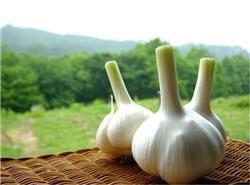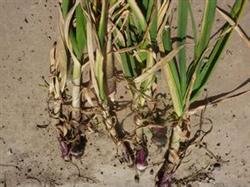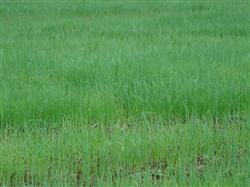Production and Management Techniques of Garlic in Spring

First, do a good job in water supply. As garlic enters the critical period of water demand such as garlic expansion, coupled with the increase of air temperature and windy weather, the demand for water of garlic increases. The majority of garlic farmers should pay full attention to water management in garlic fields and strive to irrigate (irrigate) garlic swelling water once. To meet the water demand of garlic expansion. The second is to grasp the external fattening. The key period for garlic to absorb N-P-K is in the period of garlic moss elongation-garlic head expansion. Due to the different fertilization levels of farmers, there is a significant difference in field growth, and some fields have signs of losing fat, such as yellowing leaves, thin growth and so on. For this reason, we should do a good job of external fattening according to the situation. First, combined irrigation, fertilizing with water (flushing or spreading), 15-20 kg urea per mu. Second, spraying fertilizer outside the root, 0.5% urea, 0.3% potassium dihydrogen phosphate or other organic foliar fertilizer can be sprayed. The third is to control the harm of diseases and insect pests. Garlic is prone to soft rot, leaf blight, rust and other leaf diseases and insect pests such as garlic maggots, thrips and leaf miners in the middle and later stages of garlic growth. Among them, soft rot is a bacterial disease, yellow-white stripes can run through the whole leaf, when the humidity is high, the disease is yellowish brown soft rot. Spraying wettable ultrafine powder or copper succinate at the early stage of the disease; leaf blight usually begins when the leaf tip presents a small white dot at the beginning, and then shows an irregular or oval gray-white or grayish-brown spot with black mildew on it. Timely drainage after rain, timely spraying of chlorothalonil, metalaxyl manganese zinc, disinfectant alum and other fungicides in the early stage of the disease; brown spots often appeared in the rust part, orange powder was scattered after the epidermis ruptured, and triadimefon and other highly efficient low (non) toxic agents were sprayed in the early stage of the disease to control. In addition to using sugar and vinegar or light to trap and kill pests, high-efficiency and low-toxic agents such as Lesbon, matrine, phoxim and dichlorvos should be sprayed or irrigated in time. Fourth, timely harvest. First, collect the moss in time. For the garlic that is mainly harvested, the garlic can be harvested when the garlic moss grows to more than 15-18cm, the garlic moss bends like a hook, the moss bud expands obviously, and the color changes from green to white. The second is to harvest garlic at the right time. Taking the sale of dried garlic as the goal, the suitable time for collecting dried garlic is generally about 20 days after moss picking. At this time, most of the leaves at the base of the garlic plant are dry, the pseudostem is soft, pressing the ground hard to one side shows not brittleness and toughness; those listed with fresh garlic are generally harvested 5-7 days earlier than the appropriate harvest time of garlic, in order to maintain the crisp and tender quality.
- Prev

Prevention of garlic Spring Rot in Spring
Garlic spring rot can last until mid-June, especially in low-temperature and humid years. It mainly harms the base of the lower leaf body. There is a water immersion softening spot, which expands in the up and down direction and shows light brown rot. In the middle and later stage of growth, the heart leaves became ill, and the softening and rot spread to the lower part of the flower stem. Sometimes it can lead to new.
- Next

Comprehensive control of diseases and insect pests of onion at seedling stage
First, the superior varieties can be selected in production, such as Ziyu No. 1, Ziyu No. 2, Zixing, Shuanghuanhong and so on. These varieties have the characteristics of strong spicy taste, high yield, good quality and suitable for export. These varieties generally have a yield of about 5000 kg per mu, and the yield of high-yield plots can reach 7500 kg per mu. Two.
Related
- Where is it suitable to grow horseradish in China? it is expected to see the middle altitude horseradish in Alishan.
- How to prevent tomato virus disease reasonably? (Control methods included)
- Many people like to plant towel gourd on the balcony. What are the main points of this method and management?
- What crops can chili peppers be mixed with?
- Fertilization techniques and matters needing attention in Tomato
- What are the grafting techniques for peach seedlings in spring?
- Harm and control methods of root swelling disease of Chinese cabbage
- What are the pests of sweet potatoes? How to prevent and cure it?
- Symptoms, causes and Control methods of navel Rot in Tomato
- The cause of "Cucumber rotten bibcock" in Farmers' planting Cucumber and its Control Plan

